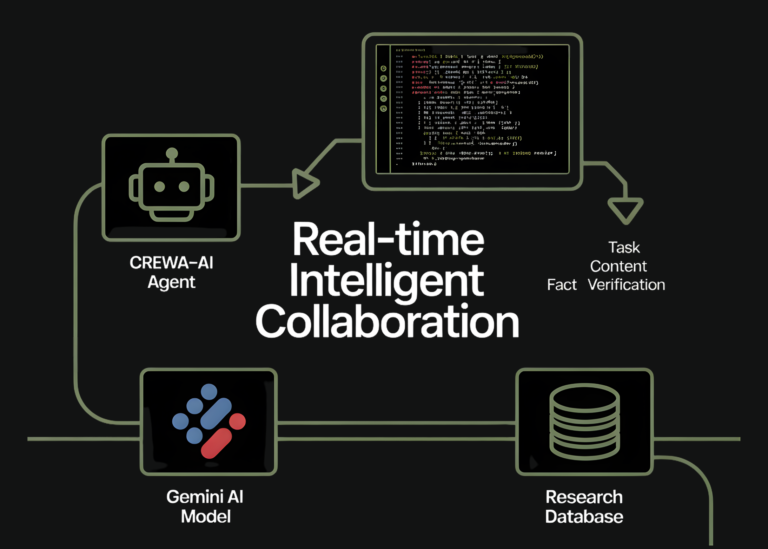The Rise of AI Tools in Crafting Virtual Assistants: A Comprehensive Guide
In an era where technology seamlessly integrates into daily life, virtual assistants have become indispensable tools for both individuals and businesses. From managing schedules to providing customer support, these AI-driven entities are reshaping how we interact with technology. At the heart of this transformation are AI tools for creating virtual assistants, which empower developers and businesses to design intelligent, responsive, and personalized digital companions. This article explores the role of AI in virtual assistants, highlights popular tools, and examines the future of this rapidly evolving field.
The Role of AI in Virtual Assistants
Virtual assistants (VAs) are software agents that perform tasks or provide services based on user input. While early VAs relied on pre-programmed rules, modern systems leverage artificial intelligence (AI) to understand natural language, learn from interactions, and adapt to user preferences. Key AI technologies driving this evolution include:
- Natural Language Processing (NLP): Enables VAs to comprehend and generate human-like text.
- Machine Learning (ML): Allows VAs to improve over time by analyzing data and user behavior.
- Computer Vision: Used in voice-activated assistants for facial recognition or object detection.
- Speech Recognition: Converts spoken language into actionable data.
These technologies enable VAs to handle complex tasks, such as answering queries, automating workflows, and even offering emotional support through conversational AI.
Popular AI Tools for Building Virtual Assistants
Several platforms and frameworks have emerged to simplify the creation of virtual assistants. Here are some of the most notable ones:
1. Dialogflow (by Google)
- Overview: A user-friendly platform for building chatbots and voice-activated assistants.
- Features:
- Drag-and-drop interface for designing conversational flows.
- Integration with Google Assistant, Slack, and other apps.
- Built-in NLP for understanding user intent.
- Use Cases: Customer service chatbots, smart home integrations, and e-commerce assistants.
2. Rasa
- Overview: An open-source framework for developing AI-powered chatbots.
- Features:
- Customizable NLP models and dialogue management.
- Supports both text and voice-based interactions.
- Scalable for enterprise-level applications.
- Use Cases: Healthcare, finance, and enterprise customer support.
3. IBM Watson Assistant
- Overview: A powerful AI tool for creating enterprise-grade VAs.
- Features:
- Advanced NLP and machine learning capabilities.
- Pre-built templates for industries like retail and banking.
- Seamless integration with IBM Cloud services.
- Use Cases: 24/7 customer support, employee onboarding, and data-driven insights.
4. Amazon Alexa Skills Kit (ASK)
- Overview: Enables developers to build voice-activated skills for Alexa devices.
- Features:
- Voice recognition and multi-turn conversations.
- Access to a vast ecosystem of third-party integrations.
- Use Cases: Smart home automation, entertainment, and productivity tools.
5. Google Assistant SDK
- Overview: Allows developers to embed Google Assistant into hardware or apps.
- Features:
- Voice and text-based interactions.
- Integration with Google’s AI models for contextual understanding.
- Use Cases: Smart speakers, IoT devices, and mobile applications.
6. Microsoft Bot Framework
- Overview: A comprehensive platform for building AI-powered bots.
- Features:
- Integration with Azure Cognitive Services for advanced AI capabilities.
- Support for multiple channels (e.g., Teams, Skype, websites).
- Use Cases: Enterprise customer service, internal productivity tools, and healthcare applications.
Choosing the Right AI Tool: Key Considerations
Selecting the appropriate AI tool depends on specific needs, technical expertise, and business goals:
- Ease of Use: Platforms like Dialogflow and Rasa offer varying levels of complexity, with Dialogflow being more beginner-friendly.
- Customization: Open-source tools like Rasa allow deeper customization compared to proprietary solutions.
- Scalability: Enterprise-focused tools (e.g., IBM Watson) are designed to handle large-scale operations.
- Integration: Ensure the tool can connect with existing systems, APIs, and third-party services.
- Cost: Evaluate pricing models (e.g., subscription-based vs. pay-per-use) and hidden fees.
Benefits of AI-Powered Virtual Assistants
- Efficiency: Automate repetitive tasks, freeing human agents for complex issues.
- 24/7 Availability: Provide round-the-clock support without downtime.
- Personalization: Use user data to tailor interactions and recommendations.
- Cost Savings: Reduce labor costs while maintaining high service quality.
- Data Insights: Analyze user interactions to refine strategies and improve offerings.
Challenges and Ethical Considerations
While AI tools offer immense potential, challenges persist:
- Data Privacy: Handling sensitive user data requires robust security measures.
- Bias and Fairness: AI models may inherit biases from training data, leading to skewed responses.
- User Trust: Transparency in AI decision-making is crucial for building credibility.
- Technical Complexity: Integration and maintenance can be resource-intensive.
The Future of AI Tools for Virtual Assistants
The future promises even more advanced capabilities:
- Emotional AI: VAs equipped with sentiment analysis to detect and respond to user emotions.
- Multimodal Interactions: Combining voice, text, and visual cues for richer experiences.
- Edge Computing: Processing data locally on devices to enhance speed and privacy.
- Generative AI: Tools like GPT-4 enabling VAs to generate creative content or engage in open-ended conversations.
As AI continues to evolve, virtual assistants will become even more intuitive, proactive, and integral to daily life.
Conclusion
AI tools for creating virtual assistants are revolutionizing how we interact with technology, offering unprecedented convenience and efficiency. Whether you’re a developer, entrepreneur, or business leader, leveraging these tools can unlock new opportunities for innovation and growth. By understanding the available options and addressing challenges thoughtfully, the future of virtual assistants looks brighter than ever. As AI advances, one thing is clear: the line between human and machine interaction will continue to blur, reshaping our world in ways we’ve only begun to imagine.







